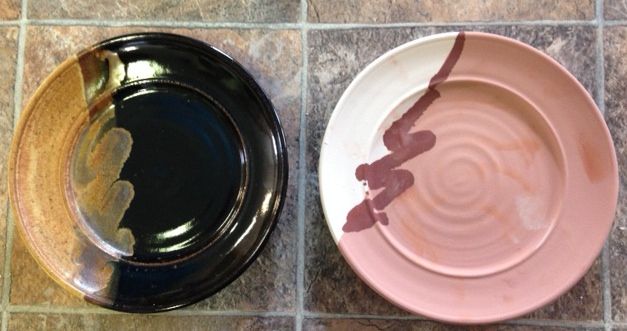Does Clay Make Good Mortar?
Mortar is one of the oldest building materials, having been used for thousands of years to bind together bricks, stones and other masonry units. It serves important functions such as distributing loads, allowing movement, and preventing water leakage. Traditional mortars were made from materials like lime, sand, crushed shells and clay. Over time, Portland cement largely replaced older binding agents to create modern cement mortars. But there has been renewed interest in using traditional mortar recipes, including clay, for their flexibility, breathability and ecological benefits.
This article explores the use of clay as a mortar material. We’ll examine the properties of good mortar, how to make and work with clay mortar, its performance characteristics, pros and cons, and alternatives. Our goal is to provide an in-depth look at clay mortar to help you evaluate if it may be suitable for your next project.
What is Mortar?
Mortar is a workable paste used to bind construction blocks together and fill the gaps between them. The purpose of mortar is to evenly distribute the load across the masonry structure and provide strength.
Mortar has several important uses in construction:
- It bonds bricks or other masonry units together in a uniform way.
- It fills gaps between blocks, allowing uneven shapes to be joined.
- It seals openings in the wall surface to prevent water penetration.
- It provides cushioning between masonry units to prevent cracking due to settling.
There are several main types of mortar differentiated by the material used to create them:
- Cement mortar – made from cement, sand, and water.
- Lime mortar – made from lime, sand, and water.
- Clay mortar – made from clay, sand, and water.
Properties of Good Mortar
Mortar has several important properties that determine whether it will perform well in construction projects.
Workability, Plasticity, and Bonding Ability
Good mortar needs to be fairly soft, plastic, and workable so it can be mixed, transported, placed, compacted, and tooled. It should also strongly bond with masonry units through adhesion and mechanical lock.
Strength and Durability
Mortar must be strong enough to transfer loads and forces through the masonry assembly. It needs sufficient compressive strength to withstand weight and forces without crumbling. Good mortar is also durable enough to resist weathering, erosion, and decay over time.
Resistance to Weather and Erosion
Mortar should not readily deteriorate from exposure to moisture, rain, snow, and cycles of freezing and thawing. It requires water-resistance and weather-resistance properties to prevent erosion from wind, rain, and flowing water.
Clay as a Mortar Material
Clay has been used as a binding material in mortar for thousands of years. The composition and properties of clay make it suitable for creating a durable mortar in certain applications.
Clay is comprised of fine-grained minerals and sediment that is plastic when wet and hard when fired or dried in the sun. Different types of clay have varying amounts of sand, silt, and organic matter. Clay’s fine particle size allows it to bind other materials together effectively.
Clay mortar offers several benefits. Clay has good adhesion and sealing properties, allowing it to strongly bind bricks or other masonry materials. It is also readily available, affordable, and workable. Unlike lime mortars, clay mortars retain strength and stability when exposed to water. Clay mortars are less prone to cracking and erosion.
However, clay also has some downsides when used in mortar. Clays have relatively low strength compared to cement or lime mortars. They are also prone to swelling and shrinking due to changes in moisture content. Pure clay mortars can be brittle and deteriorate faster than lime- or cement-modified mortars unless properly stabilized. Workability can vary greatly depending on the clay’s composition.
Making Clay Mortar
Making a good clay mortar requires the right ingredients and proper mixing. The basic ingredients are clay, sand, and straw.
The clay acts as the binder while the sand provides bulk and strength. Straw improves tensile strength and helps prevent cracking from shrinkage as the mortar dries.
A typical recipe is 3 parts sand, 1 part clay, and a handful of straw per bucket of mortar. The clay and sand should be sifted to remove large particles and impurities.
Mix the dry ingredients together thoroughly before adding water. Only add enough water to achieve a thick, workable consistency. Too much water will weaken the mortar.
Mixing can be done by hand or with a power mixer. Hand mixing requires kneading the mortar for 5-10 minutes to evenly distribute the ingredients.
Let the mixed mortar sit for a few hours, then remix before use. This allows ingredients to fully absorb water and improves workability.
Using Clay Mortar
Proper preparation and application are key to getting good results with clay mortar. Here are some tips on working with clay mortar:
Preparation of Materials
Before starting any clay mortar project, make sure your clay is well-mixed and free of large lumps or foreign material. Add water a bit at a time until the clay reaches a dough-like consistency that can be easily worked but is not too wet. Having the right moisture content in the clay mixture will help the mortar adhere and cure properly.
Application Techniques
Apply clay mortar by scooping a portion from your mixing container and pressing it firmly into the joints between masonry units, bricks, or stones. Use a trowel or pointing tool to smooth and shape the mortar. Take care not to smear the brick faces or leave large clumps. Maintain a uniform joint thickness of around 1⁄2” for structural integrity.
Curing and Maintenance
Clay mortar requires proper curing to gain strength. Mist the mortar lightly with water and cover it with plastic sheeting for the first 7 days after application. This slow cure helps ensure a strong bond. Avoid over-wetting the mortar during curing. Re-point any cracked or damaged mortar as needed over time.
Performance of Clay Mortar
Clay mortar offers both advantages and disadvantages in terms of performance compared to other mortar materials like cement or lime. Some of the key factors to consider are:
Strength
Clay mortar can have good compressive strength when first applied, though it is generally weaker than cement mortars. The small particle size and plasticity of clay allows it to form a dense matrix when compacted. However, clay’s strength tends to decline over time as it loses plasticity, especially when exposed to moisture and weathering.
Plasticity
The plasticity of clay is one of its best attributes as a mortar. In its plastic state, clay is highly workable and can be easily shaped, spread, and tooled. It bonds well to masonry units, conforming to irregularities. However, plasticity also depends on moisture content. As clay mortar dries, it can crack and lose adhesion.
Permeability
Clay has low permeability compared to lime mortars, which allows less moisture to penetrate. This provides good protection for masonry units. But it also prevents moisture within the masonry from escaping, which can lead to damage over time. Dense clay is also less forgiving of movement.
Durability
The durability of clay mortar is poor compared to cement and lime alternatives. Clay is vulnerable to erosion from weather exposure, particularly from wind-driven rain once cracks develop. Freeze-thaw cycles can quickly degrade exposed clay mortar in colder climates.
Weather Resistance
Clay mortar generally has poor weather resistance overall. It readily absorbs moisture, leading to reduced strength, loss of plasticity, and increased potential for erosion, leaching, and damage from freeze-thaw cycles. Using clay with high sand content can improve weather resistance.
Pros and Cons of Clay Mortar
Clay mortar offers some notable benefits as well as some downsides that need to be considered when deciding whether it’s the right material for a specific project.
Benefits of Clay Mortar
Some of the advantages of using clay as mortar include:
- Natural and Sustainable – Clay is an abundant natural material, making it a sustainable and eco-friendly choice.
- Good Adhesion – Clay naturally bonds well to other masonry materials like stone, brick, adobe, etc.
- Flexibility – Clay mortar is more flexible than cement mortar, allowing for slight movement in the masonry.
- Breathability – Clay mortar allows moisture to migrate through it, helping walls “breathe.”
- Lower Cost – Sourcing and preparing clay mortar can be less expensive than buying premixed cement mortars.
Downsides and Limitations
The disadvantages and limitations of clay mortar include:
- Lower Strength – Clay mortar is not as strong and durable as cement-based mortars.
- Erosion – Exposed clay mortar can erode away more easily from weather exposure.
- Shrinkage Cracks – Clay mortar is prone to shrinkage cracks as it dries and cures.
- Efflorescence – Water soluble salts can cause whitish mineral deposits on clay mortar.
Alternatives to Clay Mortar
While clay can be used to make mortar, there are several other common mortar materials that have their own advantages and disadvantages compared to clay.
Lime Mortar
Lime mortar is made by mixing lime, sand, and water. It was a very common type of mortar used in ancient construction. Lime mortar offers the following properties:
- Good adhesion and flexibility
- Allows for movement and shifting between bricks or stones
- Resistant to water damage
- Long lifespan
Compared to clay mortar, lime mortar is more durable, flexible, and water resistant. However, lime mortar can be more difficult to work with and does not set as quickly as clay.
Cement Mortar
Cement mortar is made by mixing Portland cement, sand, and water. It provides these properties:
- Very strong bond
- Quick setting time
- Resistant to weathering and moisture damage
- Low permeability
Cement mortar has higher compressive strength compared to clay and can cure quickly. However, it is less flexible, less breathable, and can be more prone to cracking over time.
Overall, while clay mortar has some advantages, lime or cement mortar may provide better performance and durability in many cases. The choice depends on the specific project and construction needs.
Conclusion
In summary, clay can be a viable option for mortar in certain applications. Some key points:
- Clay has been used as a traditional mortar material for centuries in many parts of the world.
- Clay mortar can be quite strong and durable when properly prepared. The clay needs to be adequately refined and free of organic impurities.
- Clay mortar is more flexible than cement or lime mortars, allowing for more movement. This makes it suitable for historical restoration projects.
- Clay mortar is also breathable, promoting healthy moisture balance in old masonry buildings.
- However, clay mortar is not as strong in tension or compression as cement/lime mortars. It also has lower resistance to weathering long-term.
- Clay mortar requires protection from direct exposure to rain and freezing weather. It performs best in protected, inland environments.
For small projects like garden walls, barbecues, and minor repairs, a well-made clay mortar can serve sufficiently. For structural and load-bearing applications, harder lime or cement mortars would be a safer choice. Test batches are recommended to gauge performance.


